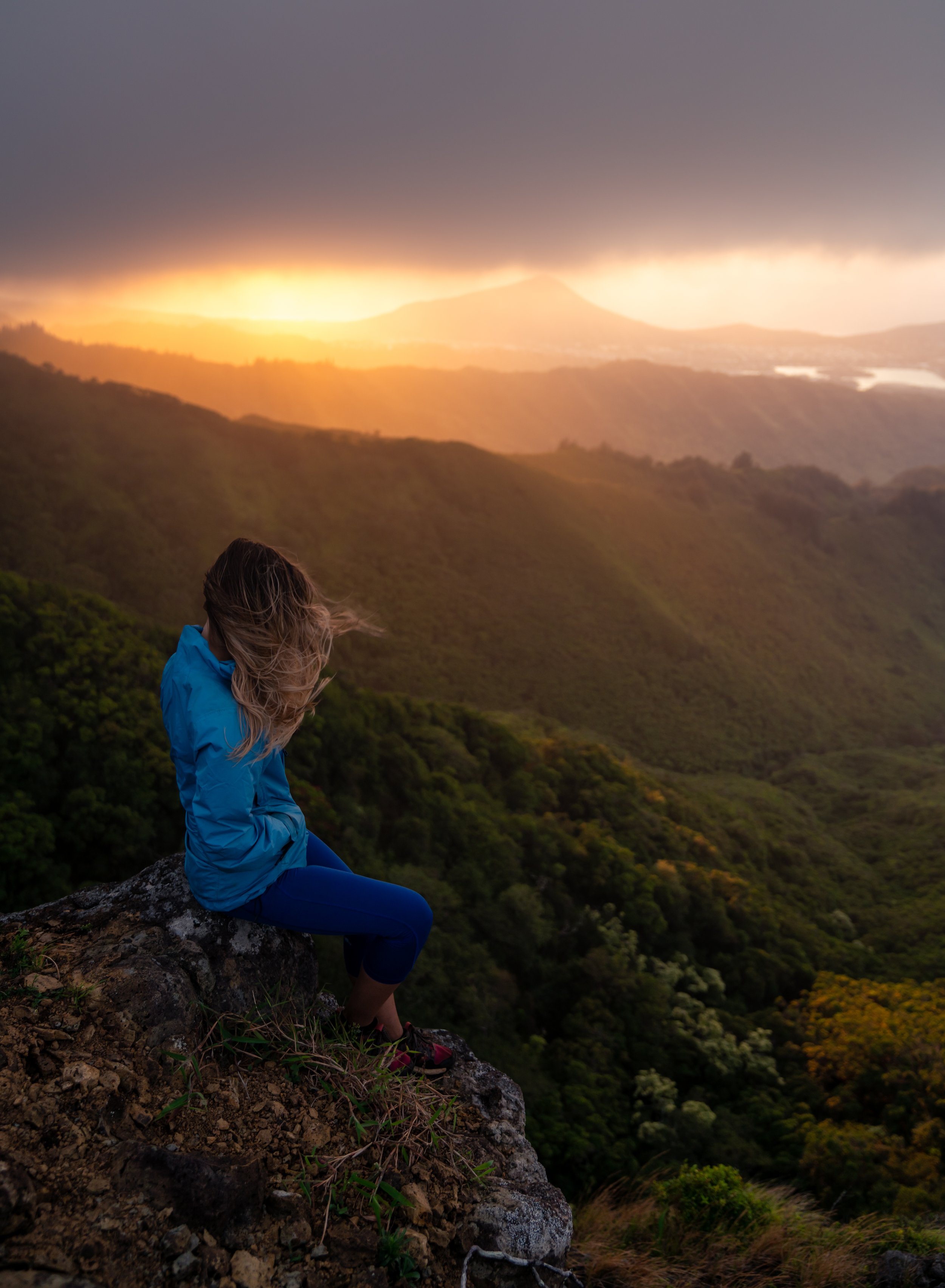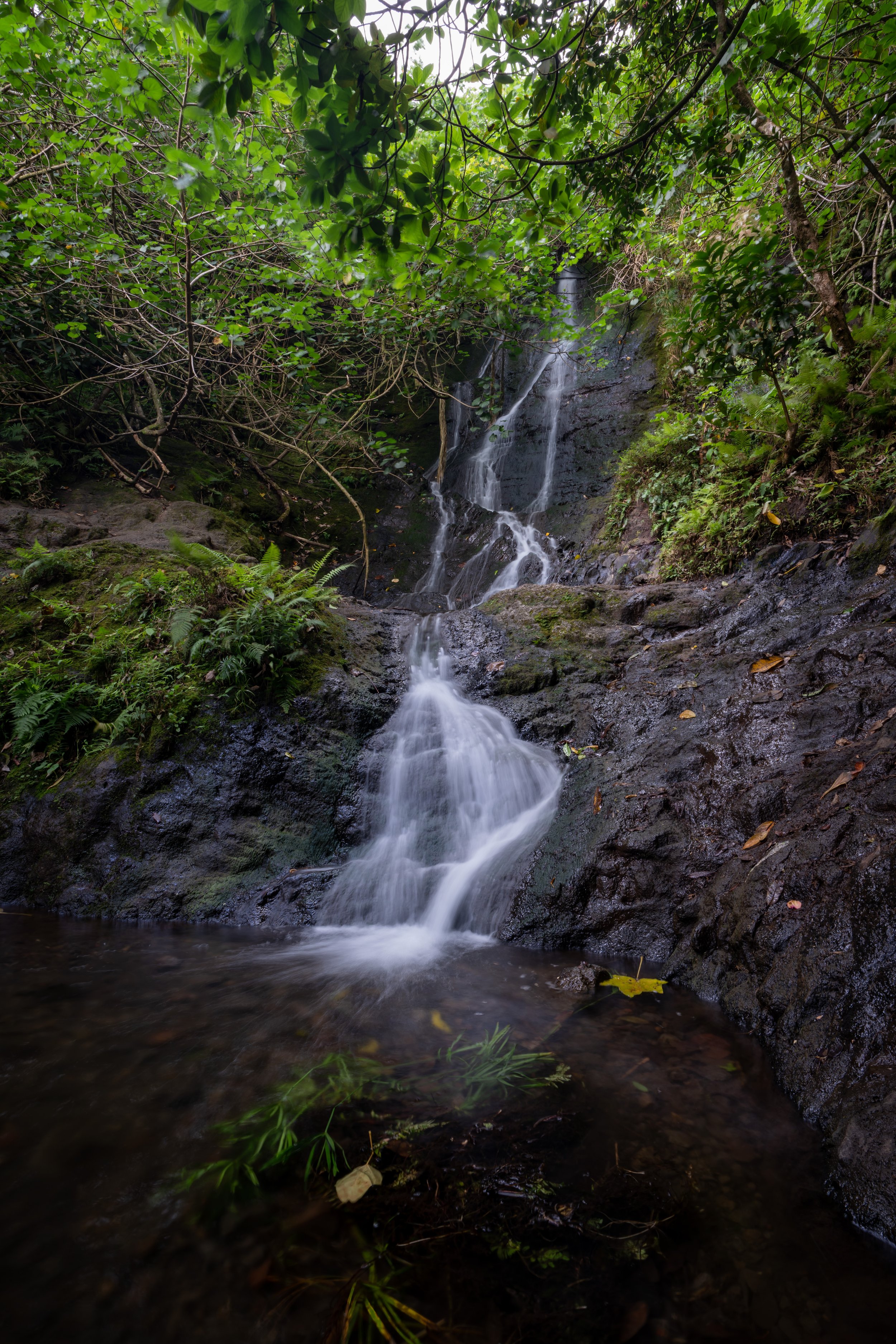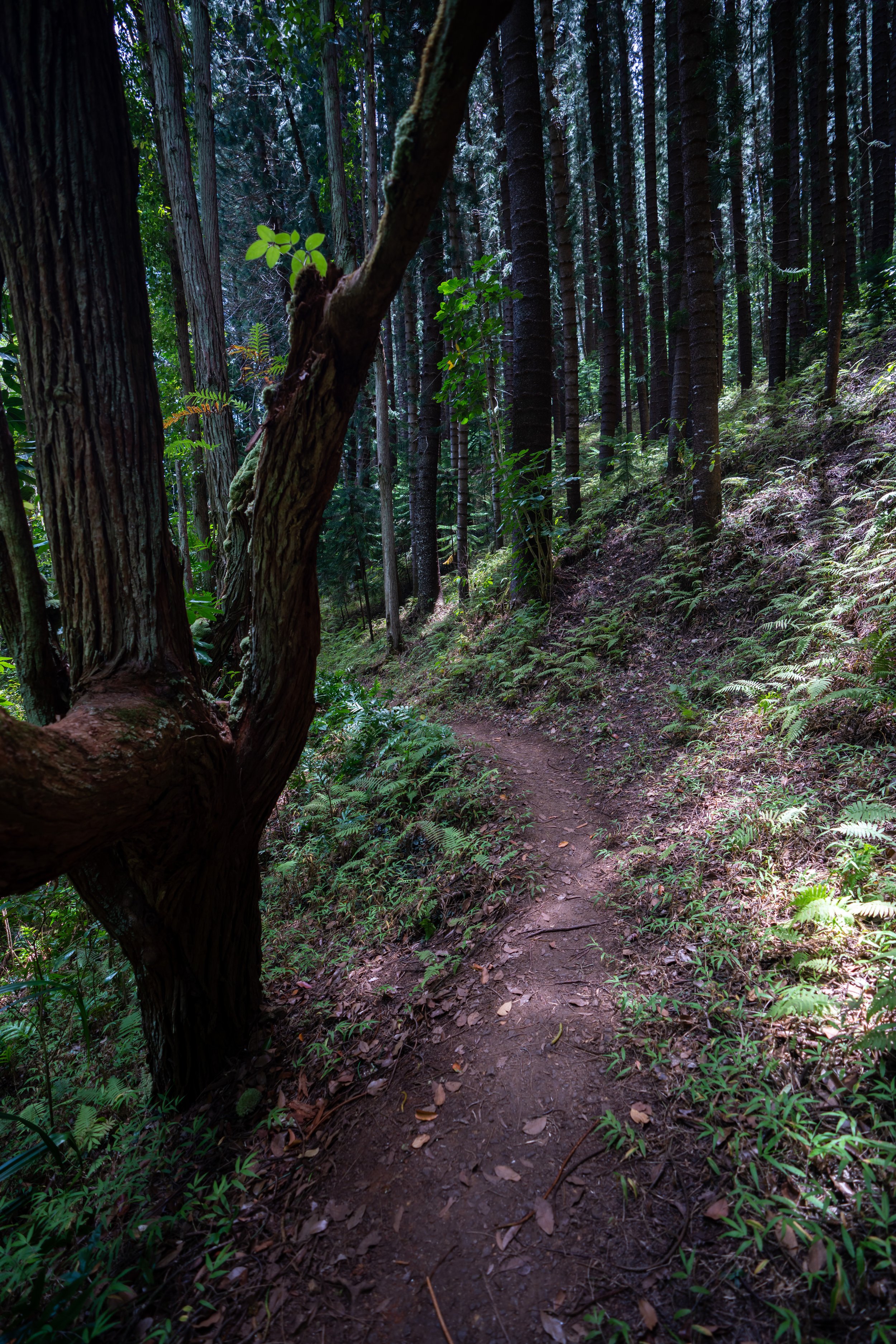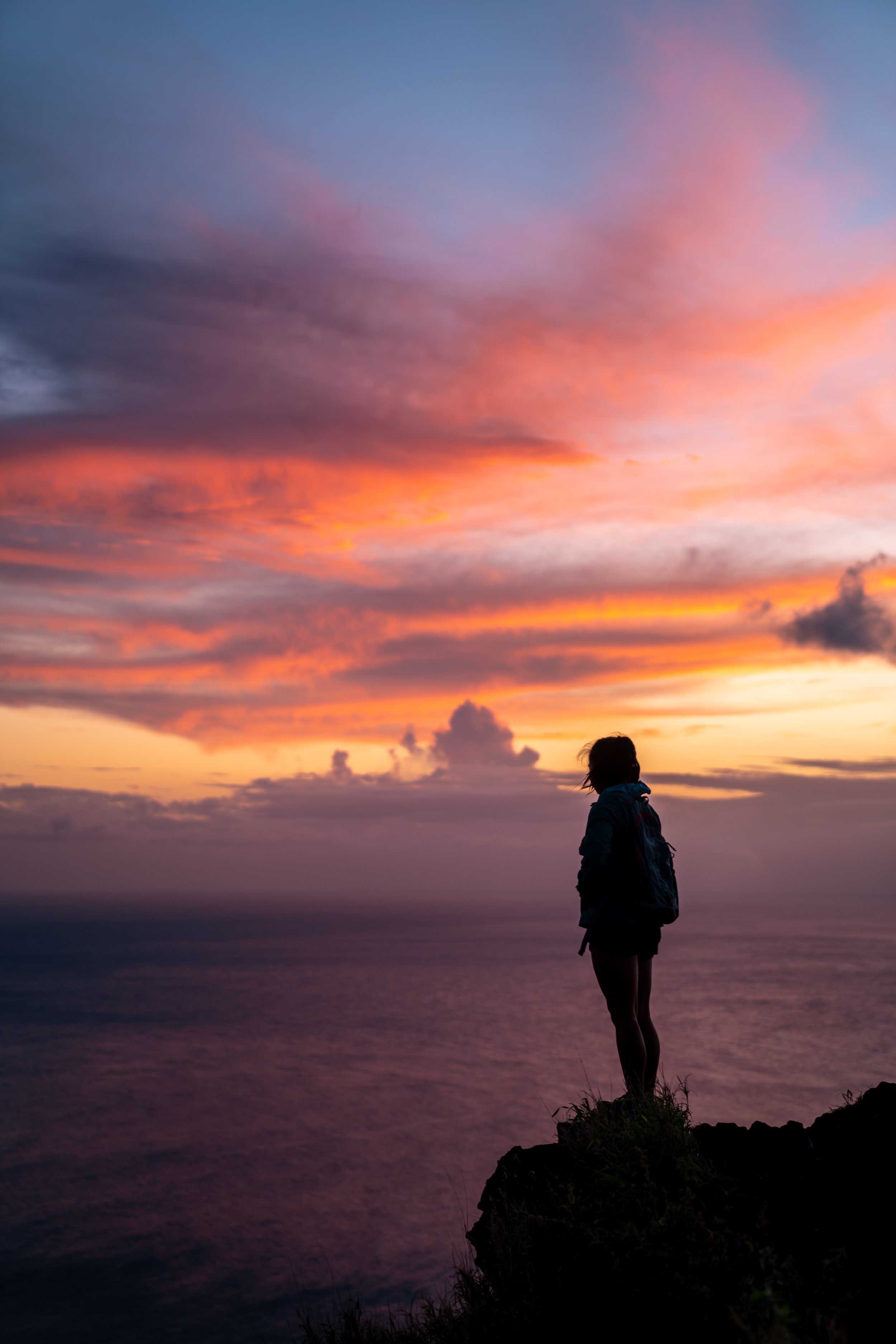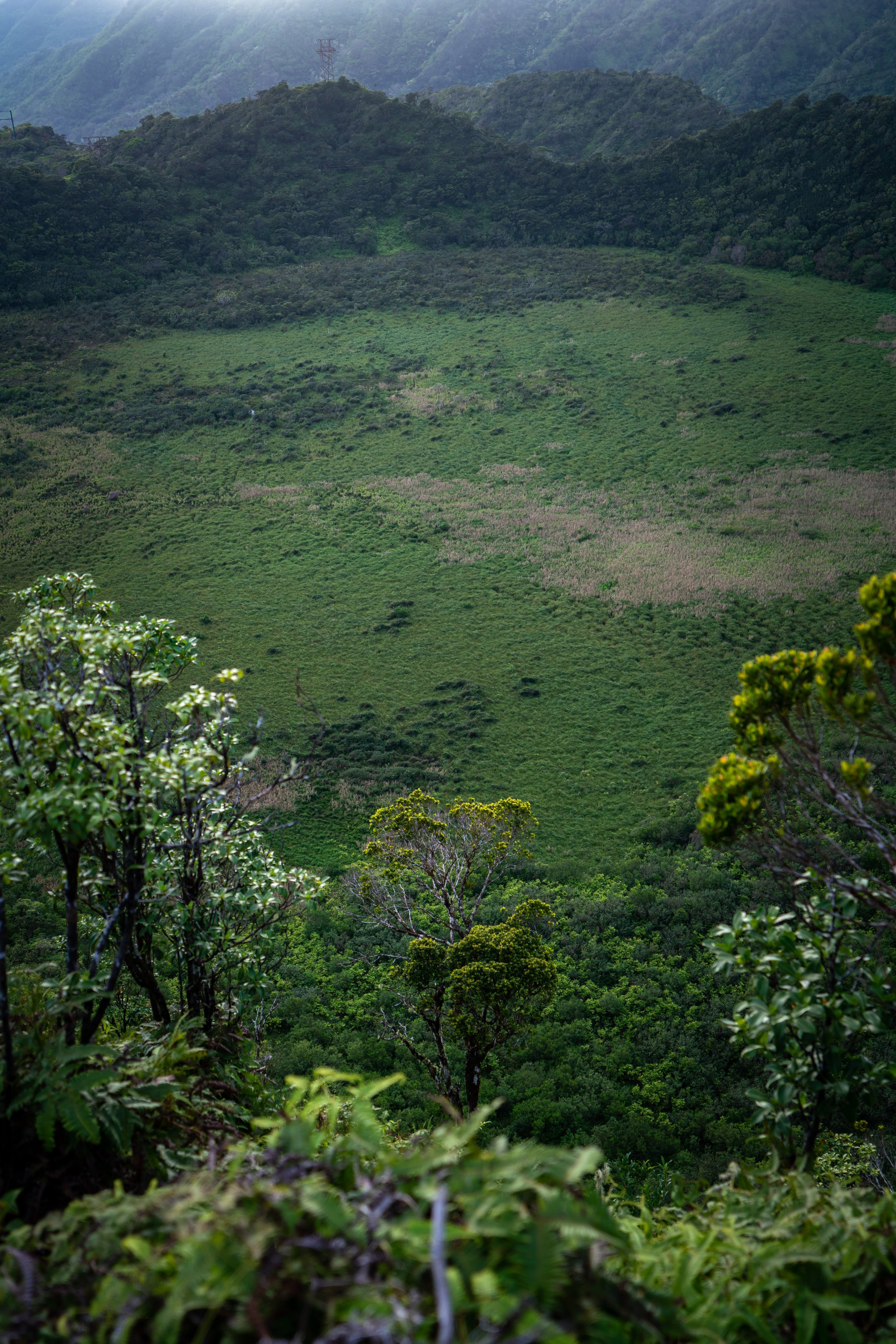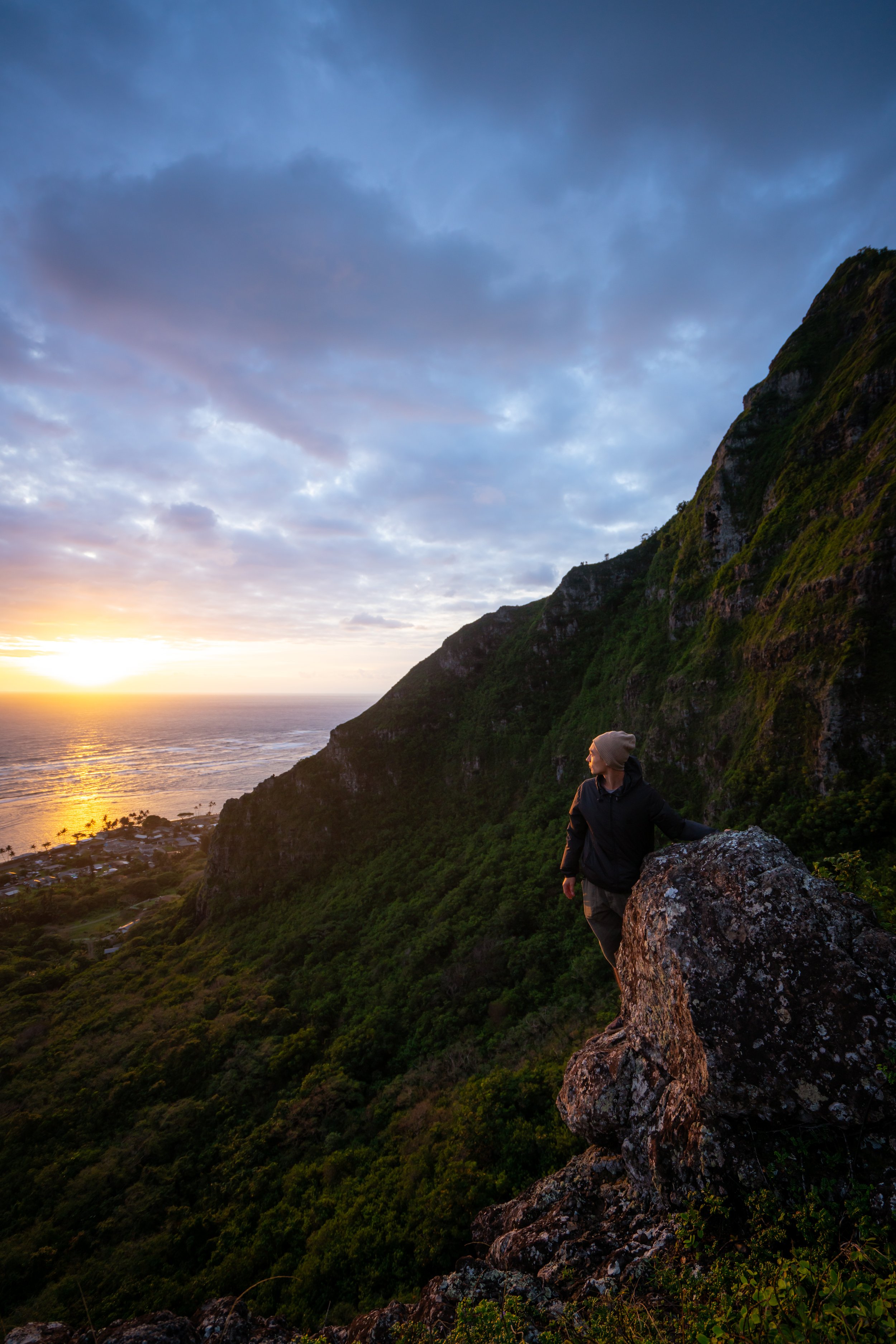Hiking the Kaʻena Point Trail & Pillbox on the West Side of Oʻahu, Hawaiʻi
Distance to Predator-Proof Fence: 2.1 miles / 3.4 km
The Kaʻena Point Trail on the West Side of Oʻahu is by far the most beautiful coastal hike on the island, and I strongly believe this over the neighboring North Kaʻena Point Trail that begins in Mokulēʻia.
I say this because the West Kaʻena Point Trail is, by and large, more scenic, which you can read about in more detail in my side-by-side comparison below.
That said, the Kaʻena Point Trail from either direction is a very comparable, mostly flat hike, making Kaʻena Point a great, easy, kid-friendly adventure—so long as you avoid hiking during the heat of the day.
Note that the distance above is only the distance to the start of the predator-proof fence and does not include any exploring around Kaʻena Point or the additional 0.4-mile (0.6 km) hike up to the Kaʻena Point Pillbox.
Kaʻena Point Trail - North Shore vs. West Side
Kaʻena Point can either be hiked from North Shore or West Side of Oʻahu, with both distances being roughly the same.
With that in mind, I suggest against letting the 0.3-mile (0.5 km) difference in distance to be deciding factor regarding which trail you choose to hike, as it should really come down to which option sounds more desirable below.
West Side
By and large, the West Kaʻena Point Trail has better views on account of the beautiful and dramatic ridges along the Waiʻanae Coast.
In addition to this, I personally prefer to hike Kaʻena Point on the West Side, as it follows a true hiking trail, unlike the North Shore, which parallels the Kaʻena Point 4WD Access Road, making the area busier overall.
To this point, the West Kaʻena Point Trail is almost always less crowded than the North Shore, as the tedious drive to the trailhead is typically longer for most hikers compared to the drive to the trailhead Mokulēʻia on Oʻahu’s North Shore. This can make the West Kaʻena Point Trail—along with Mākua and Yokohama Beach in Kaʻena Point State Park—a great place to spend a long day exploring this quiet, secluded part of the island!
North Shore
Considering everything mentioned above, the North Shore of Kaʻena Point still has a ton to offer that the West Side does not.
For one, I generally consider the North Shore to be a safer place to park. Now, that doesn’t mean the that West Side is inherently unsafe, but break-ins do happen on Oʻahu, typically to people who leave bags or valuables visible in their vehicles.
That aside, the North Kaʻena Point Trail is by far the better of the two sides for seeing a variety of native Hawaiian plants while you hike, whereas native plants on the West Side of Kaʻena Point are truly few and far between.
Finally, the North Kaʻena Point Trail generally has a much higher chance of encountering a Hawaiian Monk Seal because there simply aren’t as many suitable places for them to beach themselves on the West Side. That said, the North Kaʻena Point Trail passes numerous beaches on the way out to the point, all of which are great places to look for Monk Seals prior to the predator-proof fence at the end of the hike.
This all goes without saying, I recommend an early morning or late evening/ sunset hike for either trail, as both sides of the island can get very hot and lack shade—not to mention the West Kaʻena Point Trail is typically less windy. For these reasons, I highly recommend hiking Kaʻena Point in a hooded sun shirt, regardless of the direction you choose to begin.
Read My Separate Post: Kaʻena Point Trail (North Shore)
West Kaʻena Point Trailhead Parking
Parking for the West Kaʻena Point Trail is located at the very end of Farrington Highway, just past Keawaʻula Bay (Yokohama Bay). Note that parking is not allowed in the immediate area before the trailhead, but there should always be more than enough places to find a spot just prior.
Out of caution, consider either Kaʻena Point Trailhead to be a high-crime area for petty theft, meaning you should never leave visible bags or anything valuable in your car.
Google Maps Directions: West Kaʻena Point Trailhead
My Hawaiʻi Hiking Checklist
Hiking the Kaʻena Point Trail
Apart from one notable area where the land collapsed into the ocean, the West Kaʻena Point Trail is, for the most part, a very straightforward day hike.
This gate is always a nice sign that your getting close to the end on the return hike.
ʻIliahi aloʻe is one of the most common native species growing along the West Kaʻena Point Trail, as the vast majority of plants are non-native, invasive species, including Koa Haole and Kīawe trees, along with Fountain Grass.
At several points along the trail, evidence of the old railroad that once rounded Kaʻena Point is still present today, which becomes even more evident further down the trail.
West Kaʻena Point Tide Pools
The West Kaʻena Point Trail will also pass a number of tide pools on the way out to the predator-proof fence, but unlike the North Kaʻena Point Trail, entering the tide pools on the West Side is strongly advised against.
This is because the tide pools on the West Side of Kaʻena Point receive a much more direct open-ocean swell, making them inherently more dangerous than the protected tide pools on the North Shore.
Hawaiian Monk Seals
There is a real possibility that you will come across one of Hawaiʻi’s endemic and endangered Hawaiian Monk Seals along the trail.
Therefore, please be aware of the following guidelines before visiting Kaʻena Point State Park:
If you see a Monk Seal, please use common sense and do not approach! Many visitors have been tracked down through social media videos and prosecuted for getting too close, touching, or harassing Hawaiian Monk Seals, and be aware that Kaʻena Point State Park is one of the most patrolled state parks in all of Hawaiʻi, both by state law enforcement and community volunteers.
Be aware that Monk Seals come to the shoreline to rest and escape predation, meaning that if someone were to scare one back into the water, the seal is again exposed to the risks of predation from sharks.
Finally, feel free to stop, take photos, and enjoy them, but do so from a distance. NOAA and Hawaiʻi’s Department of Land and Natural Resources (DLNR) recommend at least 50 ft. (15.2 m) of distance.
This area in the photo below is one of the few places along the Kaʻena Point Trail where there is shade, which is exactly why I recommend hiking in a hooded sun shirt, regardless of which direction you choose to begin.
The one nice thing about hiking Kaʻena Point from the West Side over the North Shore is that the navigation aid at the end of the point is visible for the majority of the hike, which can be a great reference for how much distance there is until the end.
However, the same cannot be said for the North Shore of Kaʻena Point, as the trail is hillier and less direct, meaning the navigation aid typically isn’t visible for the first half of the hike.
Kaʻena Point Sea Arch
At roughly 1.3 miles (2.1 km), the West Kaʻena Point Trail passes by this sea arch, which is best seen by stepping off the trail just before the arch, as opposed to the far side.
The West Side of Kaʻena Point is certainly no stranger to coastal erosion from the heavy, open-ocean surf, and I’m sure areas like this will only continue to be pushed further inland as time goes on.
Past the sea arch, evidence of the old Kaʻena Point Railroad becomes more and more frequent before reaching the area where the trail collapsed, just before the predator-proof fence.
What is the Kaʻena Point Railroad?
In 1895, the Oʻahu Railway and Land Company (OR&L) began construction on a railroad around Kaʻena Point as a means of transporting people and goods between the sugar plantations on the North Shore and Honolulu.
Over the years, the railway began to serve a number of different purposes beyond its original intention, including sightseeing and transporting the military during WWII.
However, by the late 1940s, the railroad was abandoned and subsequently dismantled, leaving behind only small pieces of evidence that we can still see today, such as these railroad ties along the West Kaʻena Point Trail, with almost all traces entirely erased along the north side of Kaʻena Point.
This, once again, is one of the very few places to find shade on the West Kaʻena Point Trail, which is why hiking with 2-3L of water and a hooded sun shirt is the best way to stay safe on the hot, exposed trail out to Kaʻena Point.
This short stretch is one of the narrowest and most exposed sections of the entire West Kaʻena Point Trail.
Just before the predator-proof fence, the Kaʻena Point Trail comes this area where the coastline and trail have collapsed.
That said, there is a short uphill contour around this area, which descends to the predator-proof fence at the end of the trail on the other side.
One of the most common mistakes when hiking back is forgetting to begin the uphill contour at the fence and instead following the more obvious trail that can be seen below.
This is where the contour returns to the coastal trail.
Kaʻena Point Predator-Proof Fence
After 2.1 miles (3.4 km), the West Kaʻena Point Trail reaches the predator-proof fence, where visitors have the option to either continue through the gate to explore Kaʻena Point, or go right along the outside of the fence to begin the hike up to the Kaʻena Point Pillbox.
Personally, I recommend both if it’s your first time visiting Kaʻena Point.
To skip ahead to the Kaʻena Point Pillbox Trail, click here.
Kaʻena Point
On the far side of the predator-proof fence, the Kaʻena Point Trail simply follows one of a few designated trails out to the westernmost point of Oʻahu.
That being said, these designated trails are designed to protect everything inside the predator-proof fence, as Kaʻena Point is home to a number of native plant and animal species. This is why I think it’s important to mention the immense amount of conservation work that has been undertaken to make Kaʻena Point what it is today.
By this, I mean that Oʻahu—and all the populated Hawaiian Islands—are dominated by non-native, invasive predators such as rats and mongooses, which prey on Hawaiʻi’s native shorebirds, plants, and snails. This is why places like Kaʻena Point are of the utmost importance, similar to the Moʻomomi Preserve on Molokai, as they are among the last refuges where these species can find sanctuary from invasive predators. It is for these reasons that it’s imperative to ensure that the predator-proof fence door latches properly.
Furthermore, there are 11 federally listed endangered species found at Kaʻena Point, and I personally ask that you do your part to minimize your impact by remaining on the designated trails and not approaching any birds, Monk Seals, Sea Turtles, or other wildlife.
At this split, go left to continue hiking out to Kaʻena Point, as the trail that continues straight simply connects to the paralleling Kaʻena Point Trail from the north.
That being said, this connector trail can be a great way to create a loop of the two outer coastal trails at Kaʻena Point.
Nohu is an indigenous Hawaiian coastal species, but unlike others such as ʻIlima and Pāʻū o Hiʻiaka, which are both indigenous, Nohu is not nearly as common in Hawaiʻi.
Albatrosses, both nesting among the native coastal plants and flying overhead, are among the easiest native shorebirds to spot at Kaʻena Point.
This is the navigation aid that can be seen from miles away on the West Side of Kaʻena Point!
The farthest reaches of Kaʻena Point are arguably the best place on the entire hike to see Hawaiian Monk Seals, but again, please stay at least 50 ft. (15.2 m) away.
Kaʻena Point Pillbox Trail
To hike to the Kaʻena Point Pillbox from the West Side, start by following the outside of the predator-proof fence until you find one of two trails leading up the ridge.
Continue along the fence when the trail reaches this service road.
Waiʻanae Summit Trail (WST)
This is where the Kaʻena Point Pillbox Trail branches away from the predator-proof fence, which is located more on the downhill side to the north of Kaʻena Point than the west.
On a different note, the Kaʻena Point Pillbox Trailhead is also one of two terminuses for the much longer and more extensive Waiʻanae Summit Trail (WST), but that is truly a hike for another day.
Read My Separate Post: Waiʻanae Summit Trail (WST)
At first, the Kaʻena Point Pillbox Trail can be a little annoying through the invasive grasses and Koa Haole, but eventually, the trail pops out at this the first platform, which is where I believe the hike to the top gets more enjoyable compared to the beginning.
Kaʻena Point Pillbox
In total, the short 0.4-mile (0.6 km) trail up to the Kaʻena Point Pillbox gains about 520 ft. (158 m) from the start of the predator-proof fence to the pillbox at the top.
This where I recommend catching sunset if you’re visiting on a clear night and have headlamps for the hike back to the trailhead.
Finally, the WST continues further up the ridge from the Kaʻena Point Pillbox, but as previously mentioned, it’s truly a hike for another day, being that any adventure on the Waiʻanae Summit is typically long and very involved—not to mention that the next best place to descend is the Keālia Trail, located well before the North Kaʻena Point Trailhead.
Read My Separate Post: Waiʻanae Summit Trail (WST)
Native Plants on the Kaʻena Point Trail
Compared to the North Kaʻena Point Trail, there are far fewer native plants to find on the West Side of Kaʻena Point. However, all of the native plants that can be found along the North Kaʻena Point Trail are also found within the predator-proof fence at Kaʻena Point.
Regarding the actual trail from Keawaʻula Bay, native plants such as ʻIliahi, ʻĀkulikuli, Maʻo, Pāʻū o Hiʻiaka, and ʻUhaloa can be found growing alongside the trail.
If you would like to learn more about these and many other native Hawaiian plants from across the islands, I encourage you to check out my separate post linked below.
Read My Separate Post: Native Hawaiian Plant Guide



